Michael J. Behe's Blog, page 17
January 16, 2023
At Mind Matters News: A physicist rejects the idea that we live in a sim universe
At IAI News, Marcelo Gleiser worries that the claim that we are simulated beings with no free will reduces our ability to tackle the problems humanity faces:
The “simulation” idea may sound pretty far-fetched but it is more popular than some might expect. Science broadcaster Neil deGrasse Tyson, driverless car entrepreneur Elon Musk, and former Astronomer Royal Martin Rees have aired the idea. Philosopher of consciousness David Chalmers argues that we can’t prove we are not living in a simulation.
First, Gleiser agrees with Chalmers that, from a philosophical perspective, a sim universe is not self-evidently false. A claim that the average cat has six legs, for example, can easily be falsified — and we don’t need philosophy to do it. But how do we show that Tyson, Musk, and Rees are mistaken?
Note: The arguments go back and forth. But free will seems like one of those things that we wouldn’t know about if we didn’t have it.
Copyright © 2023 Uncommon Descent . This Feed is for personal non-commercial use only. If you are not reading this material in your news aggregator, the site you are looking at is guilty of copyright infringement UNLESS EXPLICIT PERMISSION OTHERWISE HAS BEEN GIVEN. Please contact legal@uncommondescent.com so we can take legal action immediately.Plugin by Taragana
At Mind Matters News: MIT takes steps toward meaningful free expression
The most significant line: “We cannot prohibit speech that some experience as offensive or injurious”:
Those who hold minority or unpopular views on campus are usually censured on the theory that the presentation of their views is a source of offense or even injury to others. The explicit statement that the university cannot prohibit speech on that ground implicitly recognizes that individuals on campus who cannot endure the presentation of opposing views have a problem that they need to address, if they are to continue in higher education. It is not the responsibility of the university to protect them from the debate that is the lifeblood of research and scholarship.
Note: An intellectual freedom statement will only make a difference at MIT if MIT continues to seek achievements that go beyond mere conformity to approved views.
Copyright © 2023 Uncommon Descent . This Feed is for personal non-commercial use only. If you are not reading this material in your news aggregator, the site you are looking at is guilty of copyright infringement UNLESS EXPLICIT PERMISSION OTHERWISE HAS BEEN GIVEN. Please contact legal@uncommondescent.com so we can take legal action immediately.Plugin by Taragana
At Mind Matters News: Brain scientist: Consciousness didn’t evolve. It creates evolution
With a tremor in his voice, Cognitive scientist Donald Hoffman tells Robert Lawrence Kuhn that even the Big Bang must be understood in a universe where consciousness is fundamental:
For me to be entirely consistent, if I’m going to actually say that consciousness is fundamental, then I’m saying that the Big Bang itself is something that has to be understood from within a framework in which consciousness is fundamental. The standard view — and I understand that this is completely non-standard, what I’m saying — the standard view is that the Big Bang happened 13.7 billion years ago. Eventually, consciousness kind of arose accidentally here on Earth and maybe other places and totally accidentally, that’s right? So my story is completely different. (6:54)
Note: Cognitive scientist Hoffman starts by trying to align his consciousness theory with standard evolution theory and then just chucks that and says what he thinks.
Copyright © 2023 Uncommon Descent . This Feed is for personal non-commercial use only. If you are not reading this material in your news aggregator, the site you are looking at is guilty of copyright infringement UNLESS EXPLICIT PERMISSION OTHERWISE HAS BEEN GIVEN. Please contact legal@uncommondescent.com so we can take legal action immediately.Plugin by Taragana
Sabine Hossenfelder on an anomaly that no one seems to be investigating
Philip Cunningham writes to say, quoting Sabine Hossenfelder:
“Two years ago I told you about a new quasar measurement that came out completely wrong. A stunning 4.9 sigma away from the prediction. What they did in this work was to calculate the motion of our galaxy relative to all the other matter in the universe, and relative to the radiation from the cosmic microwave background. According to the currently accepted standard model of cosmology the two results should agree. They do not. “This analysis has now independently been repeated by a second group, which just reported their results on the pre-print server. The paper has not yet been peer-reviewed, but they confirm the anomaly and indeed they find an even higher statistical significance of 5.7 sigma. “I really think that cosmologist should pay more attention to this anomaly, … – Sabine Hossenfelder – – New Cosmology Anomaly Confirmed, Particle Physics Anomaly Vanishes (2:24 minute mark – January 11, 2023)
Papers she references:
A Test of the Cosmological Principle with Quasars (2021)
and
Testing the Cosmological Principle with CatWISE Quasars: A Bayesian Analysis of the Number-Count Dipole (December 2022)
Also: From “Heart of Darkness” by Subir Sarkar (March 2022) at Inference Review
Excerpt: In this essay, I argue that the standard model of cosmology is wrong.
… Pauli offered no reason why the vacuum energy density should not gravitate, and overlooked, or ignored, the obvious conflict with general relativity. In Einstein’s theory, all forms of energy must gravitate.
This is the bone in our throat….
… Since our peculiar velocity was estimated to be a few hundred km/s, the amplitude of the dipole in the cosmic microwave background temperature should then be = β ≃ ≃ 10–3. This predicted anisotropy was indeed detected soon afterward….
,, For this reason, the kinematic interpretation of the cosmic microwave background dipole has been widely accepted….
… No Cosmic Rest Frame, No Convergence
THESE ASSUMPTIONS ARE no longer tenable. Several independent data sets now argue against the existence of a cosmic rest frame….
… These are potentially paradigm-changing developments….
… So far as the universe has been mapped in detail, there is no convergence to the cosmic microwave background frame.
A Direct Test
IN A REVIEW of these puzzling observations, the astronomer James Gunn expressed a radical thought: “Most of the problem, it seems to me, would disappear if the [cosmic microwave background] did not, in fact, provide a rest frame.”27…
… The anomalously large dipole is not of local origin….
This anomaly can no longer be dismissed. It appears that the cosmic rest frames of matter traced by quasars and the cosmic microwave background do not coincide.
This is in accordance with Tsagas’s expectations from the Raychaudhuri equation of general relativity and clearly demonstrates that the inferred acceleration is not due to a cosmological constant.43
It exists because we are non-Copernican observers embedded in a deep bulk flow.
Who’s right?
Copyright © 2023 Uncommon Descent . This Feed is for personal non-commercial use only. If you are not reading this material in your news aggregator, the site you are looking at is guilty of copyright infringement UNLESS EXPLICIT PERMISSION OTHERWISE HAS BEEN GIVEN. Please contact legal@uncommondescent.com so we can take legal action immediately.Plugin by Taragana
Is the Galton Board evidence for intelligent design of the universe?
Ken Francis writes: “Proof that God placed order out of chaos in the universe. Each ball has a 50-50 chance of bouncing right or left off of each peg as it traverses the board, but every time the result is a bell curve. More proof of Intelligent Design.”
The comments are interesting.
Hat tip: Ken Francis, co-author with Theodore Dalrymple of The Terror of Existence: From Ecclesiastes to Theatre of the Absurd
Copyright © 2023 Uncommon Descent . This Feed is for personal non-commercial use only. If you are not reading this material in your news aggregator, the site you are looking at is guilty of copyright infringement UNLESS EXPLICIT PERMISSION OTHERWISE HAS BEEN GIVEN. Please contact legal@uncommondescent.com so we can take legal action immediately.Plugin by Taragana
A conversation on a [post?]-Christian civilisation and the impact of the design inference on evidence
Peter Robinson’s Uncommon Knowledge brings three authors together, Tom Holland, Stephen Meyer and Douglas Murray:
A key consideration:
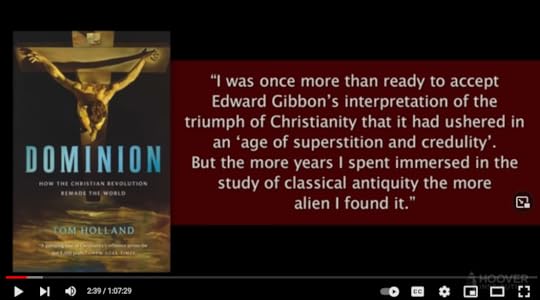
vs, this notorious poetic assertion:

Of course, both of these reflect the rise of the skeptical mindset among the educated elites, the modern inferior good that stands in for the cardinal virtue, prudence. So, we cannot escape the epistemic challenge, what it means to know and to what confidence, especially as regards roots of reality and our place in reality.
(Where, trivially, for any reasonably definable field, X, the claim that one knows on some warrant that there is no objective, knowable truth regarding X, is instantly self-referentially incoherent and self defeating. As this hyperskeptical claim is about X and claims objective warrant. Oops. Yes, this obtains for even morality. Which is pivotal, as our responsible, rational freedom is morally governed; yes, there are self-evident first duties of reason, to truth, to right reason, to prudence (so, to warrant), and more. Such may be seen from the very objector’s appeal to such duties in trying to object.)
Coming back, it may be fruitful, to hear Meyer in his own voice with Robinson, rather than as a somewhat peripheral member of a panel:
Where, of course, Dawkins’ assertion is relevant (and manifestly wrong):
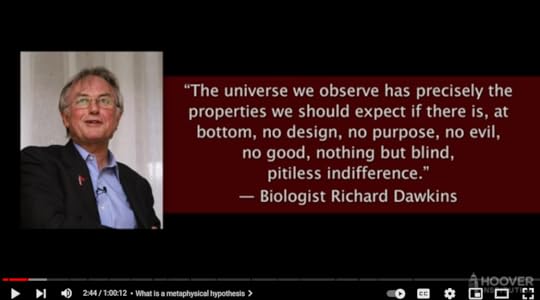
Wrong? Yes, for a world such as he suggests would instantly fall into the self referential, self defeating trap William Provine inadvertently exposed in yet another atheistical, cat out of the bag moment:
Naturalistic evolution has clear consequences that Charles Darwin understood perfectly. 1) No gods worth having exist; 2) no life after death exists; 3) no ultimate foundation for ethics exists; 4) no ultimate meaning in life exists; and 5) human free will is nonexistent
[==> key theses of nihilism. Citing the just linked IEP: “Nihilism is the belief that all values are baseless and that nothing can be known or communicated. It is often associated with extreme pessimism and a radical skepticism that condemns existence. A true nihilist would believe in nothing, have no loyalties, and no purpose other than, perhaps, an impulse to destroy. While few philosophers would claim to be nihilists, nihilism is most often associated with Friedrich Nietzsche who argued that its corrosive effects would eventually destroy all moral, religious, and metaphysical convictions and precipitate the greatest crisis in human history.” As without rational, responsible freedom, rationality collapses, Provine implies self referential incoherence. Similarly, ethical foundations include our self evident, pervasive first duties of reason: to truth, right reason, warrant and wider prudence, fairness and justice etc. Provine has given a recipe for gross (and all too common) intellectual irresponsibility.]
[He continues:] . . . . The first 4 implications are so obvious to modern naturalistic evolutionists that I will spend little time defending them. Human free will, however, is another matter. Even evolutionists have trouble swallowing that implication. I will argue that humans are locally determined systems that make choices. They have, however, no free will . . .
[–> However, without responsible freedom, mind, reason and morality alike disintegrate into grand delusion, hence self-referential incoherence and self-refutation. But that does not make such fallacies any less effective in the hands of clever manipulators]
[1998 Darwin Day Keynote Address, U of Tenn — and yes, that is significant i/l/o the Scopes Trial, 1925]
Given such a failure and its open door to nihilism, it is worth pausing to note on the importance of adequate worldview roots for even the rise of modern science as an enduring institution:
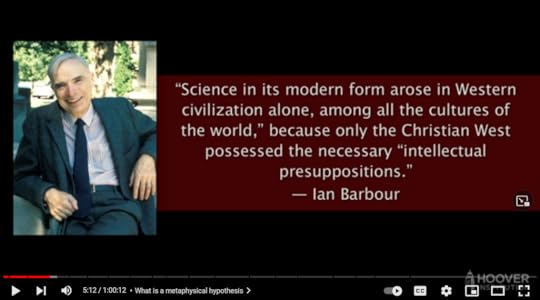
Where, too, it is worth pondering the evident sheer contingency found in the cosmos (fine tuned towards the requisites of C-Chemistry, aqueous medium, cell based life) and that of the cell itself, with its functionally specific, information rich complex, intricate organisation. So, where a natural philosopher is a scientist:
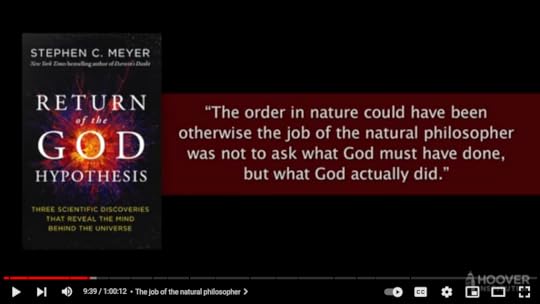
This in turn points to a theme of founders of modern science, thinking God’s creative and providential thoughts after him:
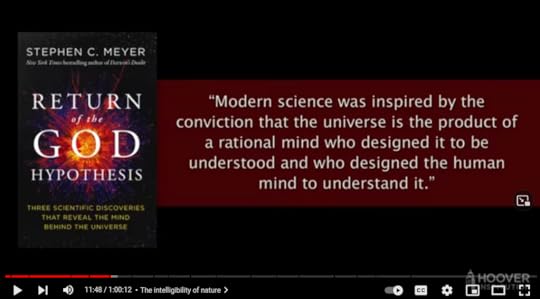
Of course, were this counter to fact, we would not find the world intelligible but might project to it a figment of our minds, undermining rational-empirical investigation. That there are many theses with that trend should give us pause.
Now, this brings us full circle to the key thesis of the modern intelligent design paradigm, that:
. . . it is reasonable and feasible as a scientific matter, to ask and investigate whether certain entities, states of affairs, contingencies etc can be marked by observable, reliable signs of intelligently directed configuration.
The answer is obviously yes (people have asked the question done the investigations and published findings . . . never mind utterly revealing, hyperskeptical denials of such publications), and the results highlight that the fine tuning of the cosmos and the functionally specific, complex organisation and associated information in the world of life are strong signs of such intelligent design. For example, here is Wallace:
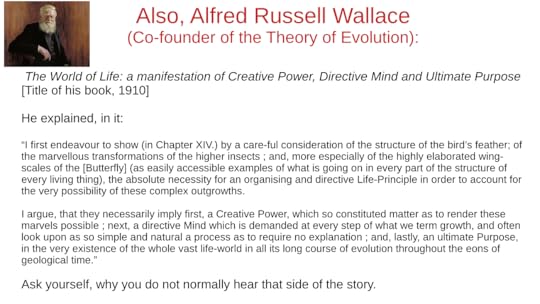
His cases in point, as readily observed examples of a widespread pattern:
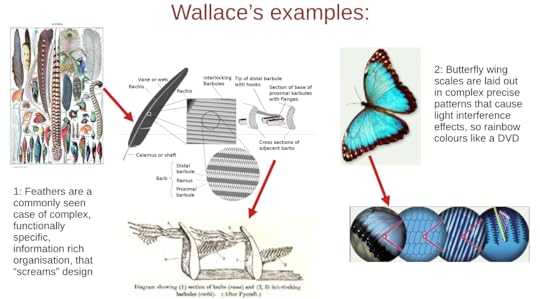
We are of course familiar with the more recently elucidated case of protein synthesis and its use of codes [which ever so many objectors hereabouts are so hot to dismiss but cannot answer Lehninger et al]:
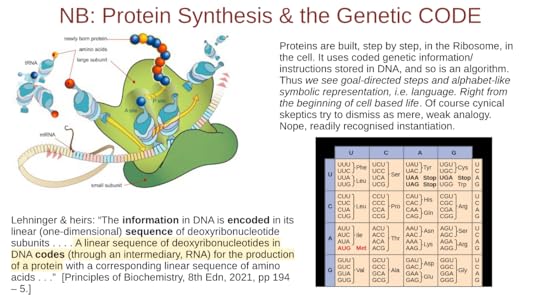
Indeed, here is more of the text, under fair use, to hammer home the point:
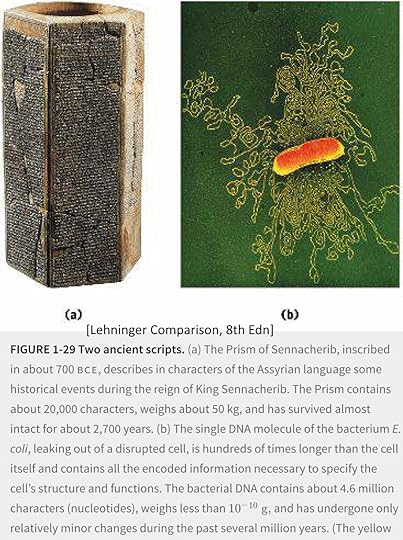
So, too, we must realise this was on the table since 1953:
 Crick’s letter
Crick’s letterOddly, the world of life has NOT led designers to instantly infer to God designed life. As was pointed out by Thaxton et al in the 1980’s, design of cell based life does not in itself imply designer beyond or within the cosmos. That is an onward question.
Where, a fine tuned cosmos that sets up cell based life DOES imply designer beyond the cosmos. So, let us consider just one key consideration, from Barnes etc:
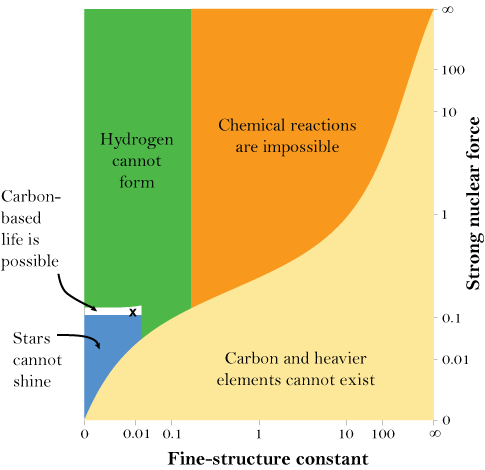 Barnes: “What if we tweaked just two of the fundamental constants? This figure shows what the universe would look like if the strength of the strong nuclear force (which holds atoms together) and the value of the fine-structure constant (which represents the strength of the electromagnetic force between elementary particles) were higher or lower than they are in this universe. The small, white sliver represents where life can use all the complexity of chemistry and the energy of stars. Within that region, the small “x” marks the spot where those constants are set in our own universe.” (HT: New Atlantis)
Barnes: “What if we tweaked just two of the fundamental constants? This figure shows what the universe would look like if the strength of the strong nuclear force (which holds atoms together) and the value of the fine-structure constant (which represents the strength of the electromagnetic force between elementary particles) were higher or lower than they are in this universe. The small, white sliver represents where life can use all the complexity of chemistry and the energy of stars. Within that region, the small “x” marks the spot where those constants are set in our own universe.” (HT: New Atlantis)It is time for fresh willingness to consider the design inference as a scientific matter, conspiracist smears and accusations notwithstanding. END
Copyright © 2023 Uncommon Descent . This Feed is for personal non-commercial use only. If you are not reading this material in your news aggregator, the site you are looking at is guilty of copyright infringement UNLESS EXPLICIT PERMISSION OTHERWISE HAS BEEN GIVEN. Please contact legal@uncommondescent.com so we can take legal action immediately.Plugin by Taragana
January 13, 2023
Integrated complexity, instantiated to achieve a specific function is always caused and implemented by an intelligent mind
Integrated complexity, instantiated to achieve a specific function is always caused and implemented by an intelligent mind
Complexity, in special when implemented to achieve a specific purpose, has always only been observed to be the product of a mind. The more complex, the more evidence of design. In ID, complexity is more defined, when we talk about specified, and irreducible complexity. We see it in every living cell, combined. DNA hosts specified complexity, or in words, that can be better comprehended, instructional assembly information. EVERY protein, which is the product of the information stored in DNA, is irreducibly complex. In order to perform its basic function, it must have a minimal size. Unless it has it, no deal, no function. On top of that, proteins are synthesized by the ribosome, depending on the specified complexity of the information stored in DNA. So on top of irreducible complexity, there is an interdependence of specified, and irreducible complexity combined.
Specified complexity of information stored in DNA, dictates and directs the making of irreducible complex proteins, which all are made to perform a specific function in the cell. On top of that irreducible complexity, there are higher and higher layers of specified, and irreducible complexity. Signaling is essential in every cell, even in single cells, and protists, and was necessary for the first life form to emerge, no matter, what it was. Signals are carriers of information, that are also specified and complex. There has to be always a variegated number of signaling networks in operation, or no life. And there has to be a minimal number of proteins, for life to exist, or no deal. So, proteins are individually irreducible complex, and the cell and its proteome are irreducibly complex because a minimal number of proteins is required for life to exist.
Living cells are prime examples of irreducible and specified complexity, instantiated to perform a specific function. In order for there to be life, a minimal number of parts has to be there, fully implemented, and operational. All at once.
Graham Cairns-Smith:
We are all descended from some ancient organisms or group of organisms within which much of the machinery now found in all forms of life on Earth was already essentially fixed and, as part of that, hooked on today’s so-called ‘molecules of life’. This machinery is enormously sophisticated, depending for its operation on many collaborating parts. The multiple collaboration provides an explanation for why the present system is so frozen now and has been for so long. So we are left wondering how the whole DNA/RNA/protein control system, on which evolution now so utterly depends, could itself have evolved. We can see that at the time of the common ancestor, this system must already have been fixed in its essentials, probably through a critical interdependence of subsystems. (Roughly speaking in a domain in which everything has come to depend on everything else nothing can be easily changed, and our central biochemistry is very much like that.
Albert-László Barabási:
Various types of interaction webs, or networks, (including protein-protein interaction, metabolic, signaling and transcription-regulatory networks) emerge from the sum of these interactions. None of these networks are independent, instead, they form a ‘network of networks that is responsible for the behavior of the cell. the architectural features of molecular interaction networks within a cell are shared to a large degree by other complex systems, such as the Internet, computer chips, and society.
Wilhelm Huck chemist , professor at Radboud University Nijmegen
A working cell is more than the sum of its parts. “A functioning cell must be entirely correct at once, in all its complexity
Plugin by Taragana
January 11, 2023
US Flights delay — computer glitch?

Systems are not perfect, but . . . END
U/D: The FAA Tweeted:
The FAA @FAANewsUpdate 5: Normal air traffic operations are resuming gradually across the U.S. following an overnight outage to the Notice to Air Missions system that provides safety info to flight crews. The ground stop has been lifted. We continue to look into the cause of the initial problem9:50 AM · Jan 11, 2023·1.4M Views
Looks like a bug or maybe system overload, of what type has not been announced.
Copyright © 2023 Uncommon Descent . This Feed is for personal non-commercial use only. If you are not reading this material in your news aggregator, the site you are looking at is guilty of copyright infringement UNLESS EXPLICIT PERMISSION OTHERWISE HAS BEEN GIVEN. Please contact legal@uncommondescent.com so we can take legal action immediately.Plugin by Taragana
Wind turbine promotions
Here:
While, wind is a part of energy diversity, ask, what is not being said here? (As in, fluctuations and non load following.)
END
PS, part of this is to equip us to detect balanced or balancing information from what leaves out significant issues or buries the lead. That is significant as it is then easy to trot out the buried reference to X, when someone asks questions. Meanwhile, the rest of the story — X — is subtly marginalised relative to the pushed point P.
Copyright © 2023 Uncommon Descent . This Feed is for personal non-commercial use only. If you are not reading this material in your news aggregator, the site you are looking at is guilty of copyright infringement UNLESS EXPLICIT PERMISSION OTHERWISE HAS BEEN GIVEN. Please contact legal@uncommondescent.com so we can take legal action immediately.Plugin by Taragana
January 9, 2023
The Death Knell for Life from an RNA world
The RNA world hypothesis, to be true, has to overcome major hurdles:
https://reasonandscience.catsboard.com/t2024-the-rna-world-and-the-origins-of-life#3414
1. Life uses only right-handed RNA and DNA. The homochirality problem is unsolved. This is an “intractable problem” for chemical evolution
2. RNA has been called a “prebiotic chemist’s nightmare” because of its combination of large size, carbohydrate building blocks, bonds that are thermodynamically unstable in water, and overall intrinsic instability. Many bonds in RNA are thermodynamically unstable with respect to hydrolysis in water, creating a “water problem”. Finally, some bonds in RNA appear to be “impossible” to form under any conditions considered plausible for early Earth. In chemistry, when free energy is applied to organic matter without Darwinian evolution, the matter devolves to become more and more “asphaltic”, as the atoms in the mixture are rearranged to give ever more molecular species. In the resulting “asphaltization”, what was life comes to display fewer and fewer characteristics of life.
3. Systems of interconnected software and hardware like in the cell are irreducibly complex and interdependent. There is no reason for information processing machinery to exist without the software and vice versa.
4. A certain minimum level of complexity is required to make self-replication possible at all; high-fidelity replication requires additional functionalities that need even more information to be encoded
5. RNA catalysts would have had to copy multiple sets of RNA blueprints nearly as accurately as do modern-day enzymes
6. In order a molecule to be a self-replicator, it has to be a homopolymer, of which the backbone must have the same repetitive units; they must be identical. In the prebiotic world, the generation of a homopolymer was however impossible.
7. Not one self-replicating RNA has emerged to date from quadrillions (10^24) of artificially synthesized, random RNA sequences.
8. Over time, organic molecules break apart as fast as they form
9. How could and would random events attach a phosphate group to the right position of a ribose molecule to provide the necessary chemical activity? And how would non-guided random events be able to attach the nucleic bases to the ribose? The coupling of ribose with a nucleotide is the first step to form RNA, and even those engrossed in prebiotic research have difficulty envisioning that process, especially for purines and pyrimidines.”
10. L. E. Orgel: The myth of a self-replicating RNA molecule that arose de novo from a soup of random polynucleotides. Not only is such a notion unrealistic in light of our current understanding of prebiotic chemistry, but it should strain the credulity of even an optimist’s view of RNA’s catalytic potential.
11. Macromolecules do not spontaneously combine to form macromolecules
125. The transition from RNA to DNA is an unsolved problem.
13. To go from a self-replicating RNA molecule to a self-replicating cell is like to go from a house building block to a fully built house.
14. Arguably one of the most outstanding problems in understanding the progress of early life is the transition from the RNA world to the modern protein-based world. 31
15. It is thought that the boron minerals needed to form RNA from pre-biotic soups were not available on early Earth in sufficient quantity, and the molybdenum minerals were not available in the correct chemical form. 33
16. Given the apparent limitation of double-stranded RNA (dsRNA) genomes to about 30 kb, together with the complexity of DNA synthesis, it appears dif¢cult for a dsRNA genome to encode all the information required before the transition from an RNA to a DNA genome. Ribonucleotide reductase itself, which synthesizes deoxyribonucleotides from ribonucleotides, requires complex protein radical chemistry, and RNA world genomes may have reached their limits of coding capacity well before such complex enzymes had evolved.
Plugin by Taragana
Michael J. Behe's Blog
- Michael J. Behe's profile
- 219 followers



